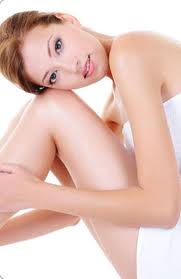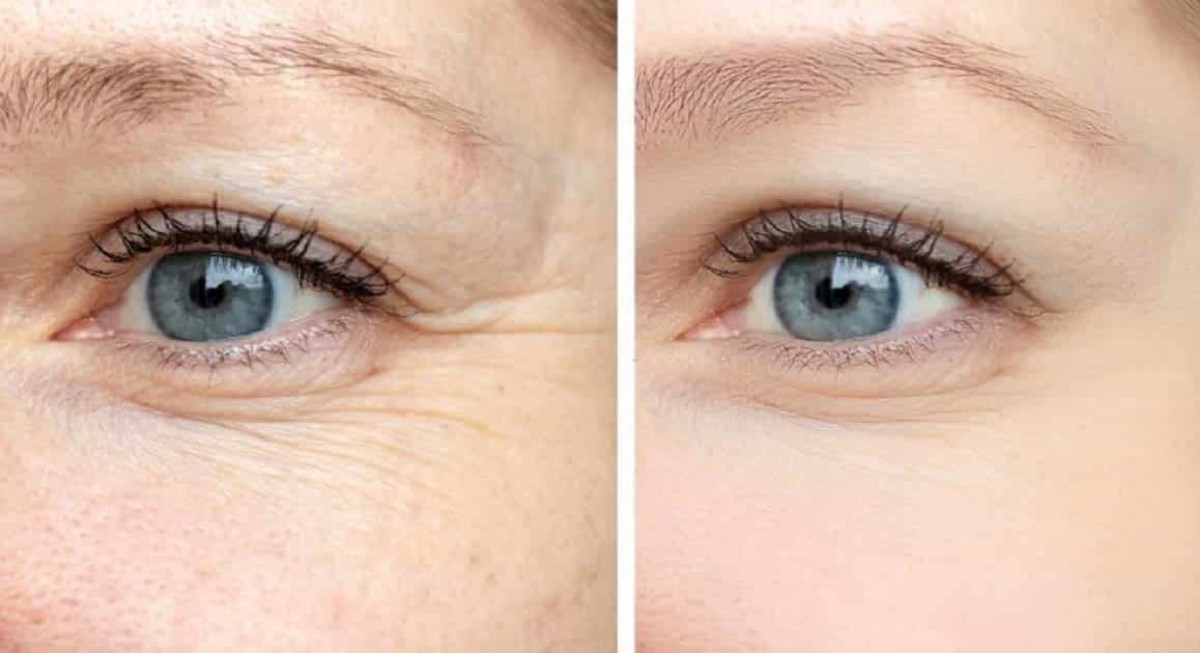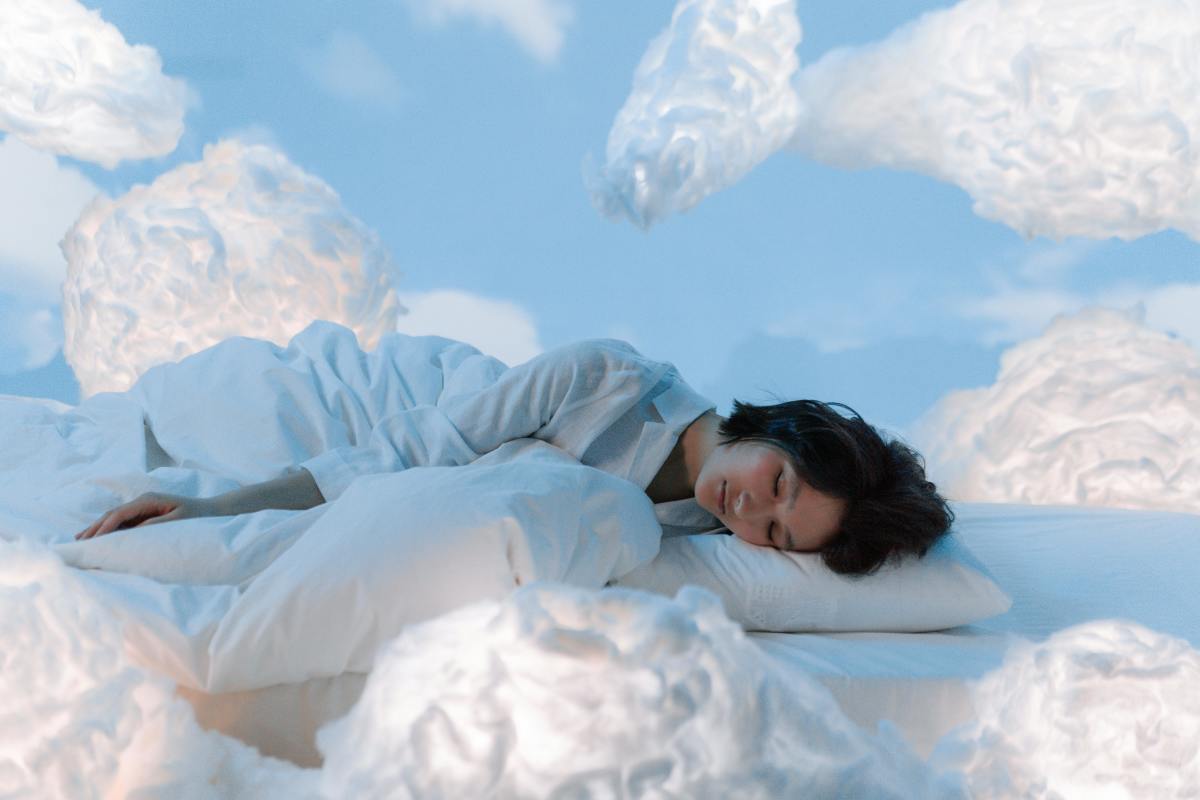Expand Your Skin Vocabulary

Our Skin - the Largest Organ of Our Body
Skin - it is the largest organ of our body. Our skin is exposed to all the elements and because of this, needs a lot of care. Take care of your skin and you will look and feel better. Our skin is subject to rashes, acne, bug bites, sunburn, breakouts and other irritations. From head to toe, your skin needs extra attention. Our faces is one of the most noticable parts of us, and it is important to have a facial routine that works well for your skin type.
Skin Care Vocabulary:
Exfoliating: cells of the skin last a few day, after which our body sheds these cells. Exfoliatingthelps facilitate this process. Exfoliation used on wet skin, helps reduce the risk of whiteheads, pimples and blackheads, and helps your face look more radiant.
- loofah is a scrubbing brush that can be used to exfoliate in the shower
- microdermabrasion is used by dermatologists as a more intense way to exfoliate
The good and bad of exfoliation: exfoliation can help increase the sloughing off rate and allow moisturizers to better penetrate the skin, but exfoliating too much can dry out your skin. People with sensitive skin are especially vulnerable so make sure to apply moisturizer after exfoliating.
Be sure to use a body scrub on your body and not your face. Your face needs a more gentler type of scrub to avoid redness and preventing over abrasion Limit.exfoilating to about two times a week for the best results. As long as you don’t overdo it, exfoliating will create smoother and silkier skin.
The older you are, the less you need to exfoliate. Oily skin requires more exfoliation. Warmer weather and increased sweating and oil production increase makes the need to exfoliate more.
Collagen - molecules made up of a fibrous protein packed together that make the skin stronger
Acne - caused higher levels of hormones during certain times of the month. Testerone produces sebum from the sebaceous gland which causes an excessive production of oil. Pimples with pus form when the pores get clogged. Acne can be seen in the form of red lesions, blackheads and whiteheads.
Boils form under the skin when bacteria infect the hair follicles. They start out as red lumps that are tender and grow larger until they break open
Carbuncles - an infection caused by a cluster of boils
Cellulite - lumpy cottage cheese like look on the thighs and rear thatis made up of fat being pushed up against the connective tissue underneath the skin. The skin puckers.
Dermatitis - the skin gets inflamed most often due to allergies. Itching, scaliness, oozing, scabs, blistering, redness, and swelling are common symptoms.
Eczema - atopic dermatitis - has hereditary factors and can be chronic. It affects children and adults. Eczema is very itchy and causes redness and flaking. The face, hands, knees and feet can be affected.
Stress can trigger eczema, as well as allergies and irritants in the environment.
Hives - urticaria - is swollen bumps that are pale red on the skin and cause itchiness. Hives may appear out of nowhere and usually a result of stress or an allergic reaction.
Hyper and Hypopigmentation - When the skin becomes darker in certain spots, it is known as hyperpigmentation. When the skin becomes lighter, it is known as hypopigmentation. Both are caused by a change in Melanin, which affects the color of our skin. Damage to our DNA, overexposure to UVB radiation, Addison’s disease (which is a decreased function in the adrenal gland) can cause changes in the skin’s pigmentation.
Milia - small cysts from clogged oil glands. Milia are the tiny white bumps near the eyes, usually caused by moisturizers, eyecream, oily makeup remover and eye concealer. Overexposure to the sun can also increase the formation of milia. Gentle exfoliation a few times a week may help shed the skin and clear the glands. Use less and lighter moisturizers around your eyes to lessen the liklihood of milia appearing. If the milia need to be removed go to your dermatologist to avoid causing scarring.
Perioral Dermatis - a rash on the face that causes bumps near the mouth, eyes, nose, and forehead.
Psoriasis - hereditary skin disorder and not contagious - involving itchiness, redness, and silvery scales on the skin. Psoriasis is a chronic skin condition that is seen on the scalp, elbows, lower part of the legs, the arms and the back. It’s cause is due to the skin growing and shedding abnormally fast. There are treatments that can relieve the symptoms but there is no cure.
Rosacea - inflammation of the nose, chin, cheeks, and forehead and sometimes the eyelids. The skin may take on an acne like appearance, have redness, show spider like blood vessels and swell.
Skin Blisters - clear fluid in a bubble may have pain, itching and redness associated with it.
Skin Cancer - if diagnosed early there is a very high cure rate. Early detection and knowledge is the best prevention.
Spider Veins - affect mostly older women, almost anyone can be at risk. Usually appearing on the ankles, feet, and thighs, it can also appear on the face. Factors include age and inherited traits. Weakened vein valves cause a pooling of the blood such as vericose veins and phlebitis, which is an inflammation of the veins are associated with spider veins.
Sunburn - exposure to ultraviolet radiation causing the skin to burn can start as soon as 30 minutes after being in the sun. The skin can turn red, blister and be sore to the touch causing discomfort. During peak hours of the sun 10 a.m. to 4 p.m. the skin is more prone to sunburn, even on overcast days. Protecting your skin through the proper clothing, and with sun block will help avoid the adverse effects of the sun on the skin.
Cold Sores - Herpes labialis - small blisters around the lips. Also known as fever blisters.
Vitiligo - loss of pigment color so there are irregularly shaped white patches on the face, elbows, hands, knees, feet and genitalia. The area is even with the rest of the skin and feels like the other areas of skin, there is just complete loss of pigment. Can occur at any age and seems to be an acquired condition, although in some families it appears more often. Approximately 1% of the population is affected.
Wrinkles - lines and crease in the skin that occur more with age. Wrinkles are made up of deep furrows and surface lines. Usually the first noticeable lines occur where we smile and on our forehead as a result of facial expressions. Wrinkles can be increased by smoking, sun damage, dehydration, from some medications and genetics. As we age, wrinkles become more prominent. Over exposure to the sun,smoking, genetics, and too little sleep, may accelerate wrinkles.
Topical Retinoids - help reduce fine lines of wrinkles, rough skin, and some pigmentation variations. Derived from vitamin A.
products for wrinkles
Dermabrasion - removes fine wrinkles, moles, scars, and tatoos through a surgical procedure
Microdermabrasion - using a vacuum that sprays microcrystals of aluminum oxide on the face. The process removes the top layeros skin cell and stimulates cell growth in the layer below. People generally get a smoother appearance and reduces lines, enlarged pores, coarse ksin, wrinkles and sun damaged skin. Results are temporary so repeat treatments are necessary.
Ablative Laser Resurfacing- top lay of skin is detroyed, new collagen fibers are stimulated in the underlying skin
Non Ablative Laser Devices - also use radiofrequency and pulsed light on the heated skin which form new collagen and elastin. The epidermis is not damaged. The skin begins to feel firma and looks refreshed after several treatments.
Botox - blocks the signals that cause muscles to contract giving a smoother and less wrinkled appearance so that the skin flattens since the muscles don’t tighten. Usually effective for lines around the corner of the eyes (crow’s feet), lines on the forehead and the frown lines between the eyes. Treatments only last 3-4 months.
Chemical peel - solution used on wrinkled areas so that the skin slough offs and peels away. The new regenerated skin is smooth and less wrinkled. it is best to let a professional do this for you.
Face lift - known as rhytidectomy - a from of cosmetic surgery by removing excess facial skin. Some people have their skin tightened, some do not. Lasts about 5 -10 years.
Soft tissue fillers - includes collagen, fat, hyaluronic acid that is injected into the wrinkles making them plumper and smoother. Patients may sometimes experience swelling, redness and bruising in the treated areas for a short period. As with Botox treatment, for lasting results the treatments will need to be repeated every few months.
How good the results are depend on several factors, including where the wrinkles are, as well as their depth. There is no current treatment that can stop the ageing process.
Skin Types
- Normal skin - not too oily and not too dry. Skin that has the proper balance of water and fat. Normal skin shows few imperfections, little sensitivity, small pores, and radiant skin.
- Dry skin - rough complexion, dull skin, nearly invisible pores, less elasticity, visible facial lines, and red patches. Dry skin can flake, peel, itch, crack, become irritated and inflamed, scaly and rough. Hereditary factors, age, hormones, weather, indoor heat, long showers and baths, soap and cosmetic ingredients, medications and environmental factors affect the dryness of skin.
- Oily skin - prone to acne and breakouts more common in younger people. People who have oily skin have enlarged pores, blackheads, blemishes and pimples. Puberty and hormonal imbalances play a part in oily skin, as does stress. Antibiotics and exposure to humidity and heat can increase the oil production making skin more oily.
- Sensitive skin - easily prone to irritations, itchiness, burning, dryness and rashes, and redness.
- Mature skin - older people tend to have drier skin because the oil producing glands become less active as you age .
- Combination Skin Type - skin that is dry in some areas, normal in others and oily in certain spots. The T-zone which is the nose, chin, and forehead area may vary slightly from the other parts of the face. People with combination skin types can have overly dilated pores, a shiny complexion and blackheads.
There Are Many Factors that Impact Your Skin
Your skin can changes over time. Your skin is affected by dehydration, the weather, hereditary factors, allergens and exposure to environmental factors.
The basics of skin care involve using sunscreen whenever you are outdoors. Look for lotion that has both UVA and UVB protection. Avoid smoking, keep yourself hydrated, wash you skin everyday, take your vitamins and use moisturizersthat is appropriate for your skin type.
Your skin needs are as individual as your personality. Learn to take good care of your skin and your skin will take good care of you.









